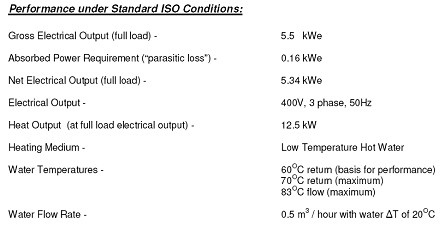This case study concentrates on Glasgows most visual house type - the high rise. Many of the highrises were built in the 1960s and 70s. They are normally very energy inefficient with huge heating demands and many have only all-electric heating.
The building is simulated to be electrically heated, insulated to less than 50mm, have single glazing and have an average natural ventilation rate of 0.75ach-1.
Heating Demand Reduction Measures
Electricity Demand Reduction Measures
Hybrid CHP system which takes electricity from grid during peak conditions
System not designed to require exporting electricity to the grid
Uses 3 Baxi Dachs 5.34kWe CHP system.
For the high-rise block, a larger system will be looked: what we are calling mini-CHP. The Baxi Dachs CHP produces around 5.34kWe and have throughout Europe over 17,000 of these units have been installed.
![]()


Please goto here to download a copy of the spreadsheet and to see the calculation procedure in greater detail.
© University of Strathclyde 2009
![]()
